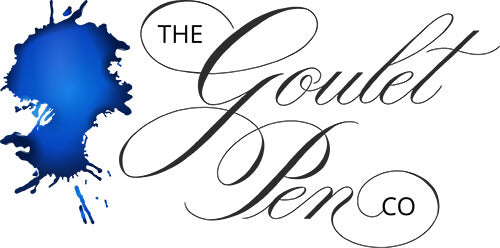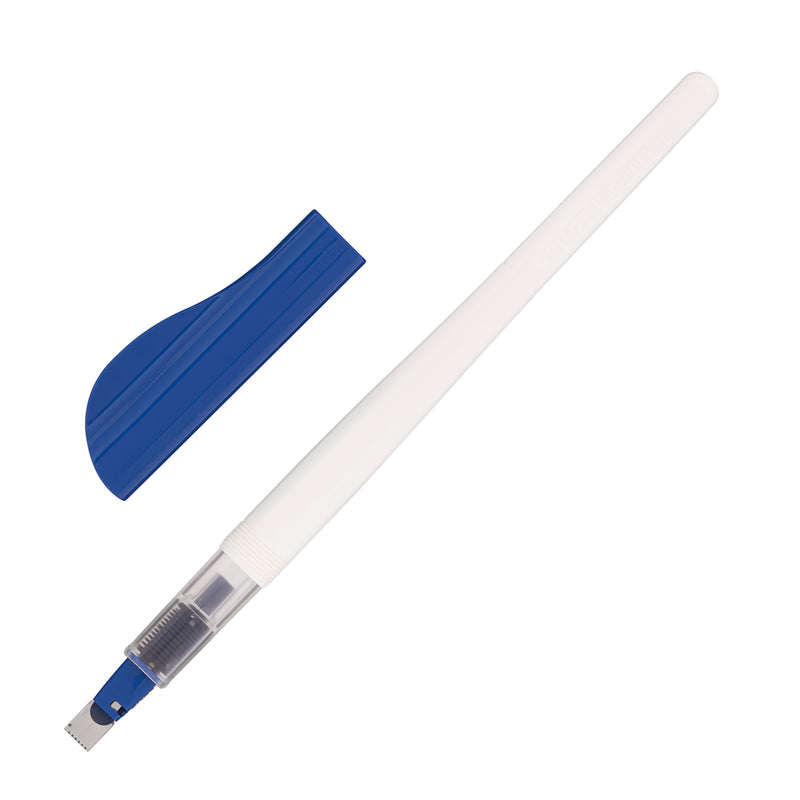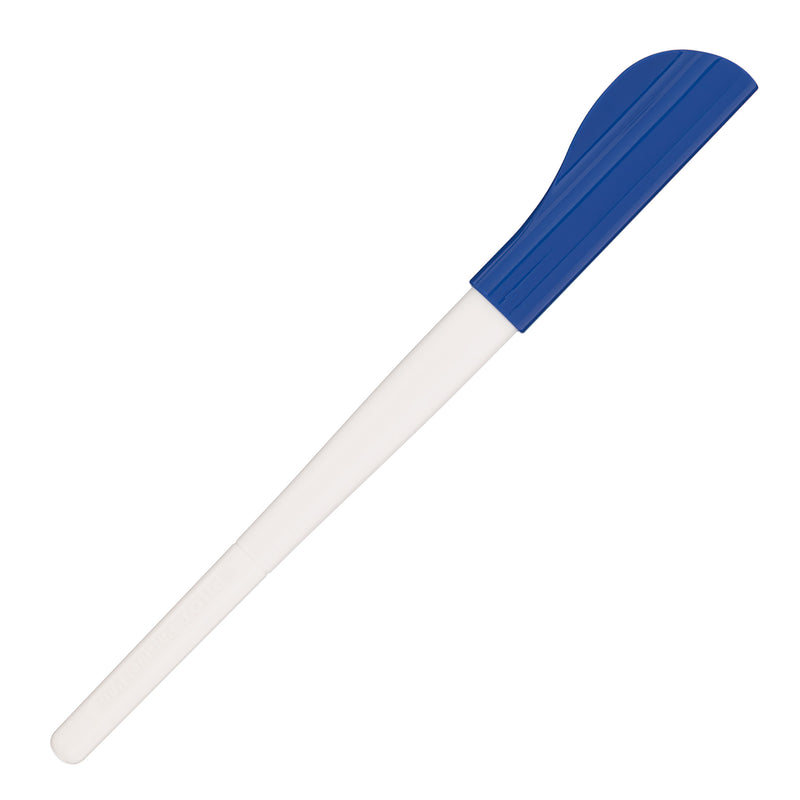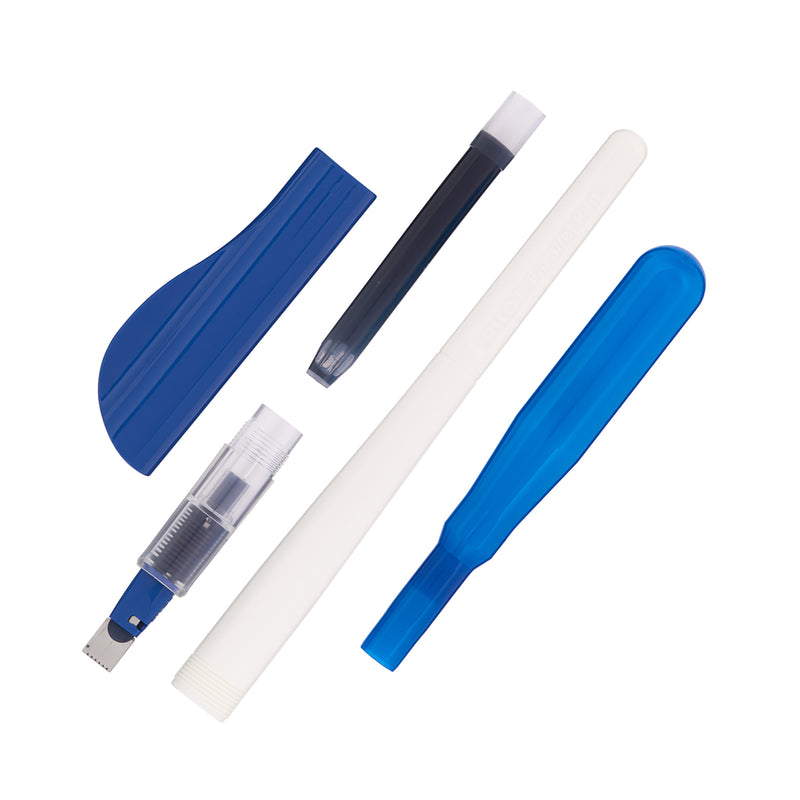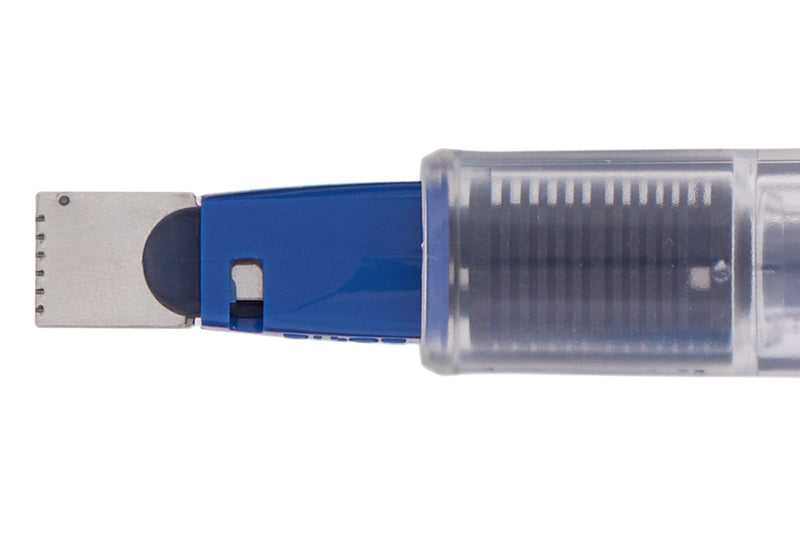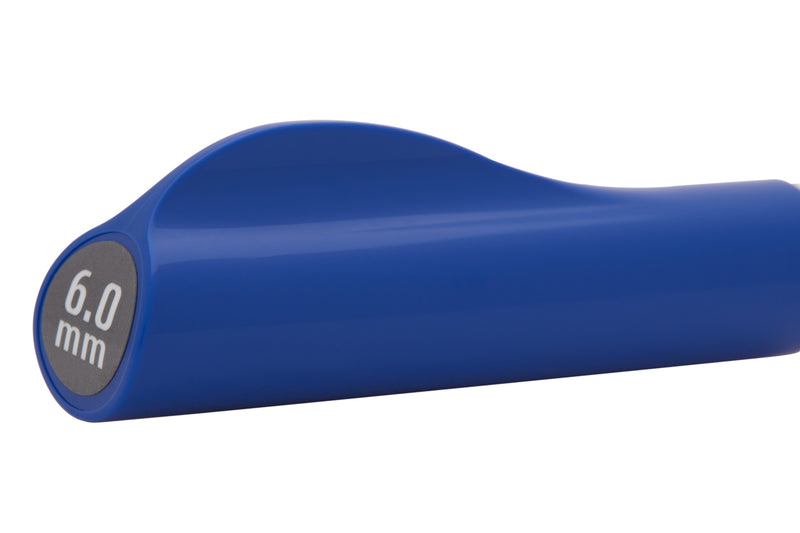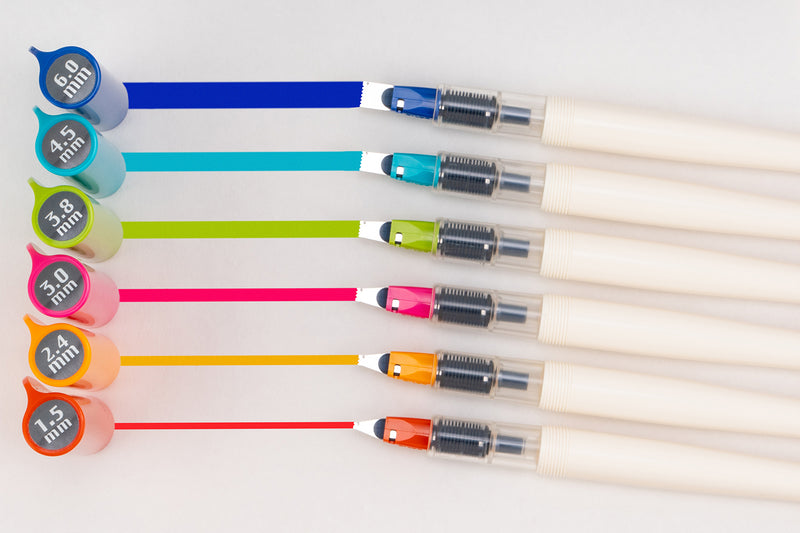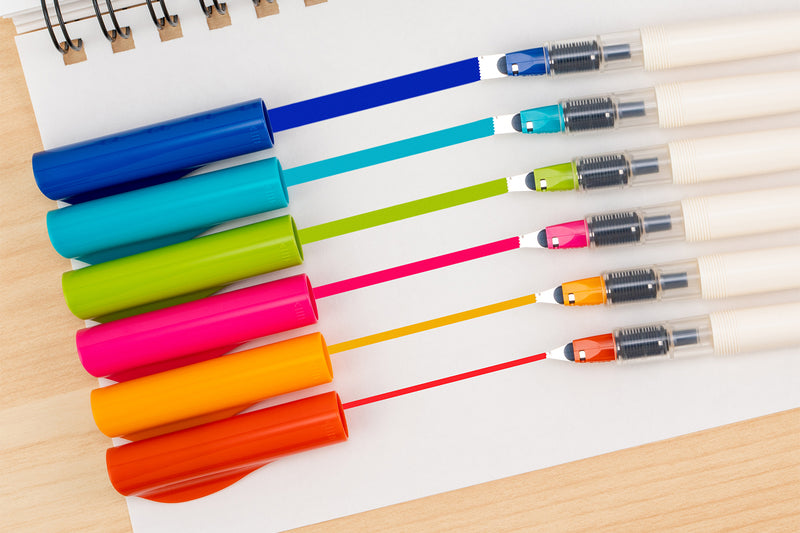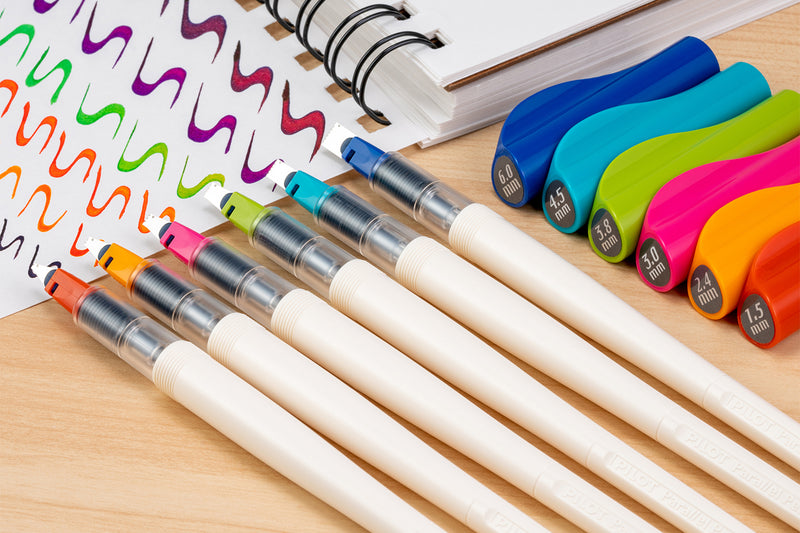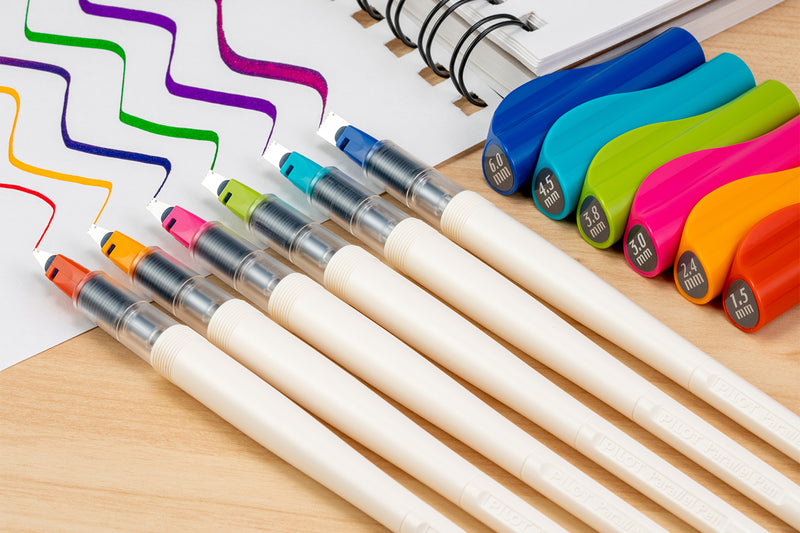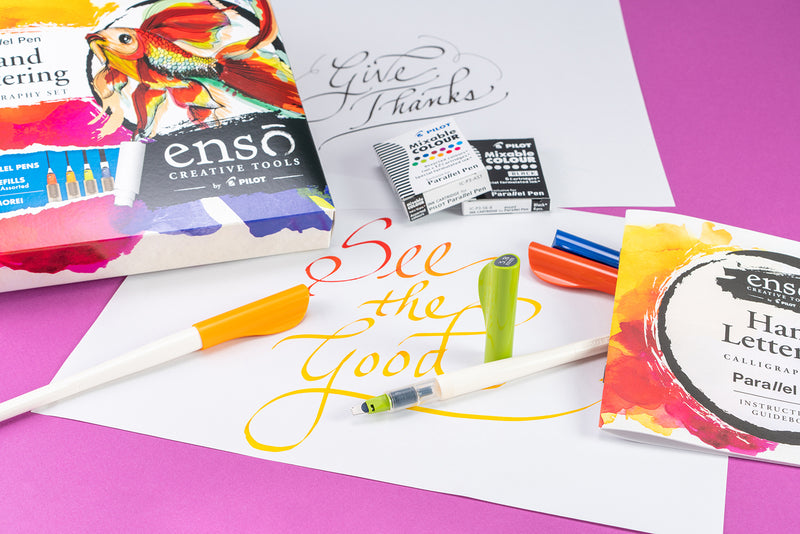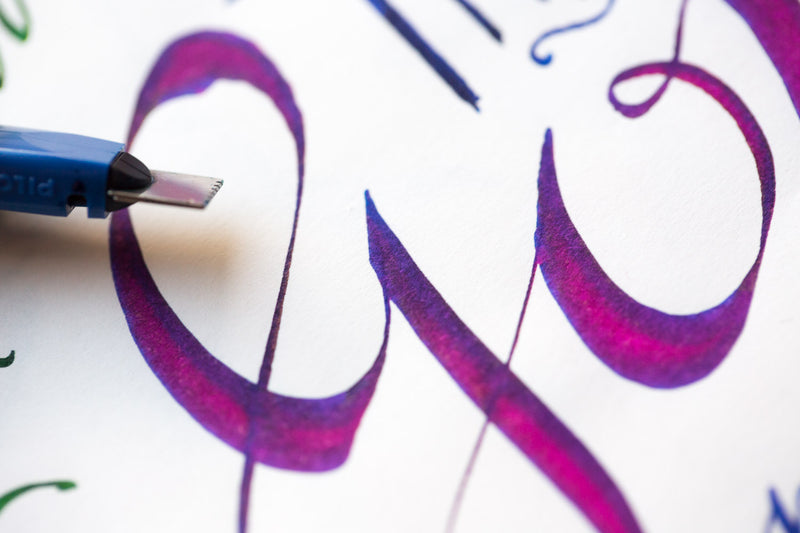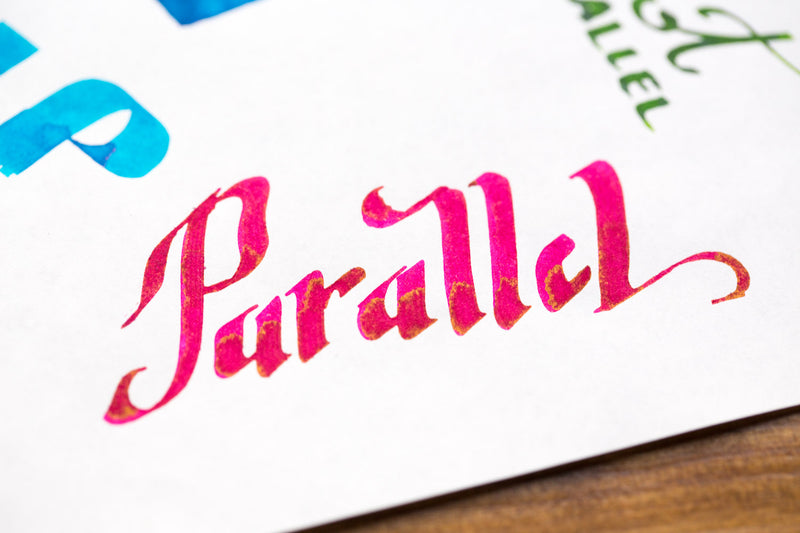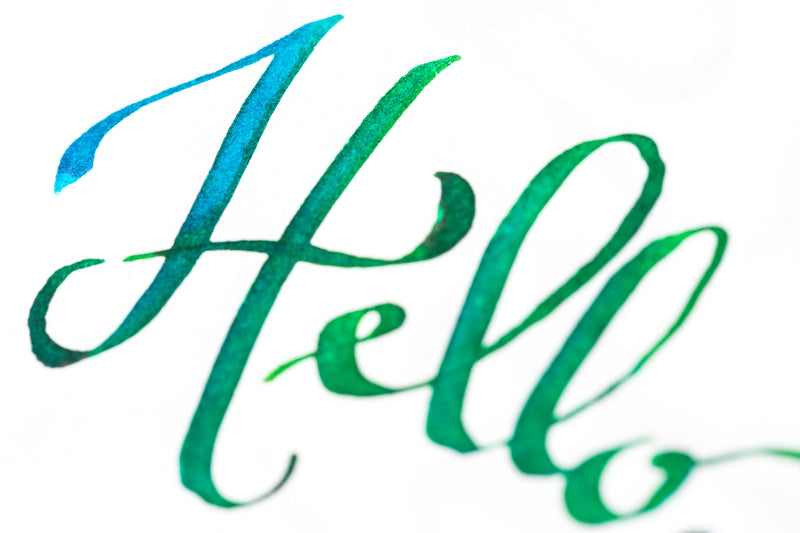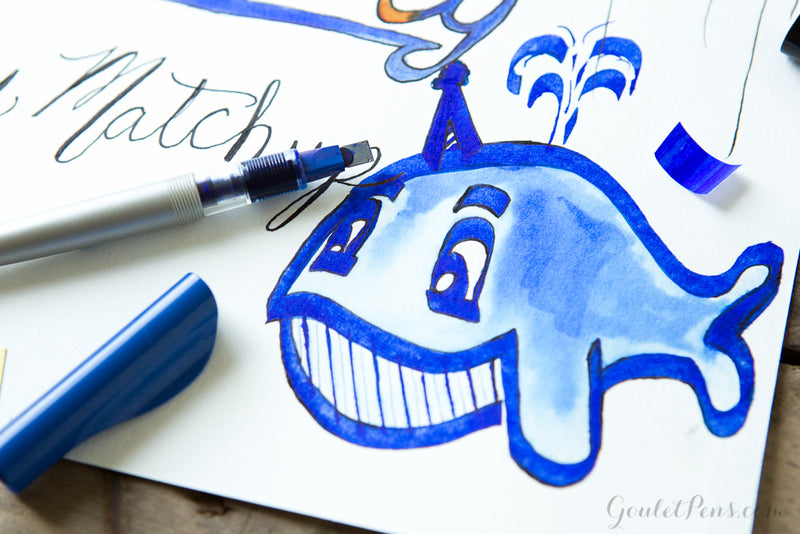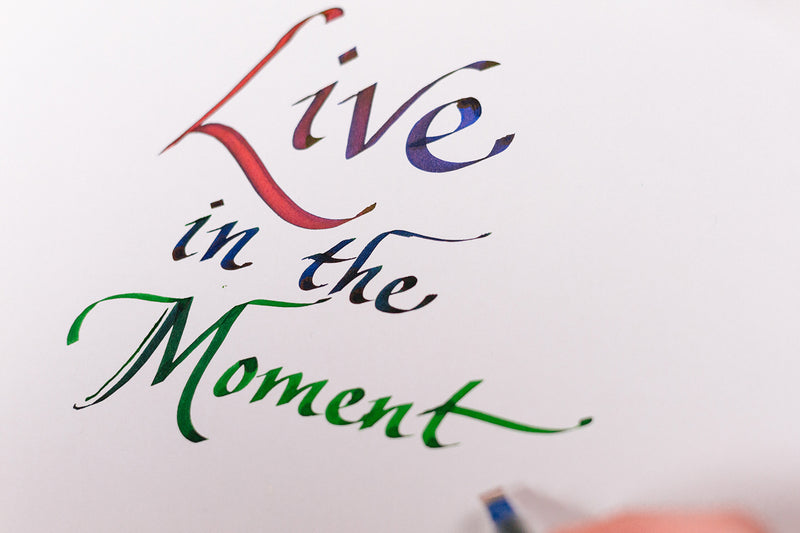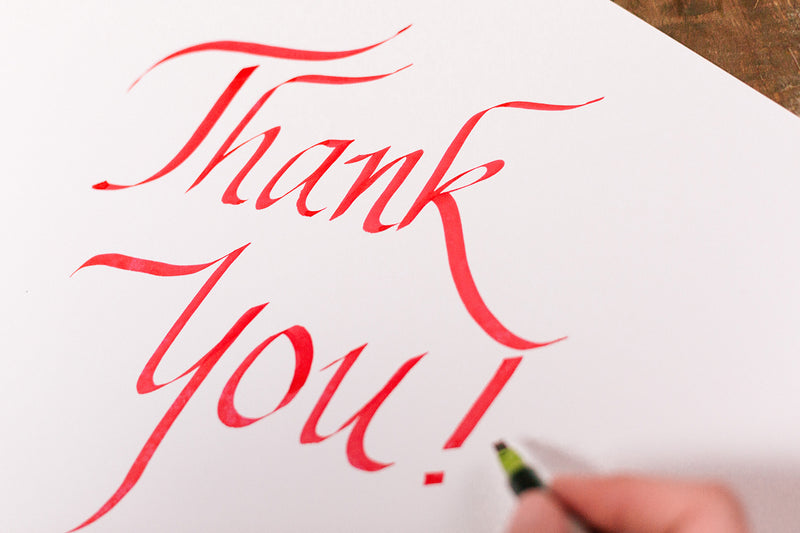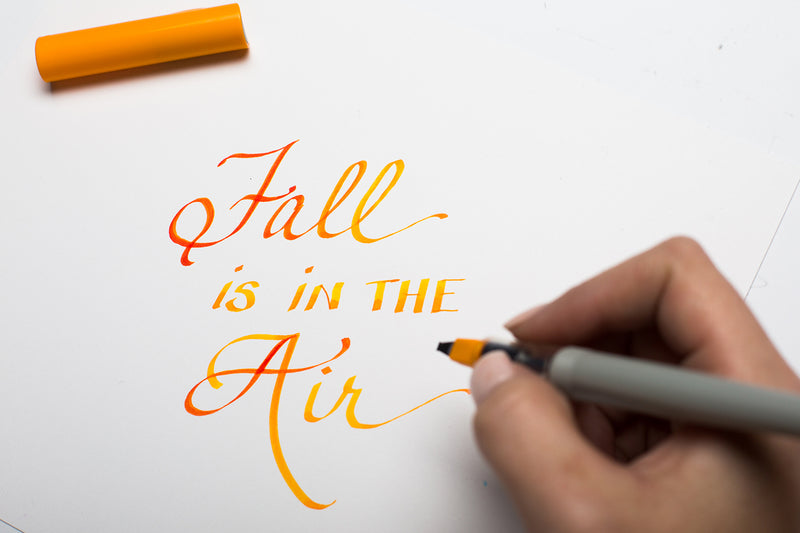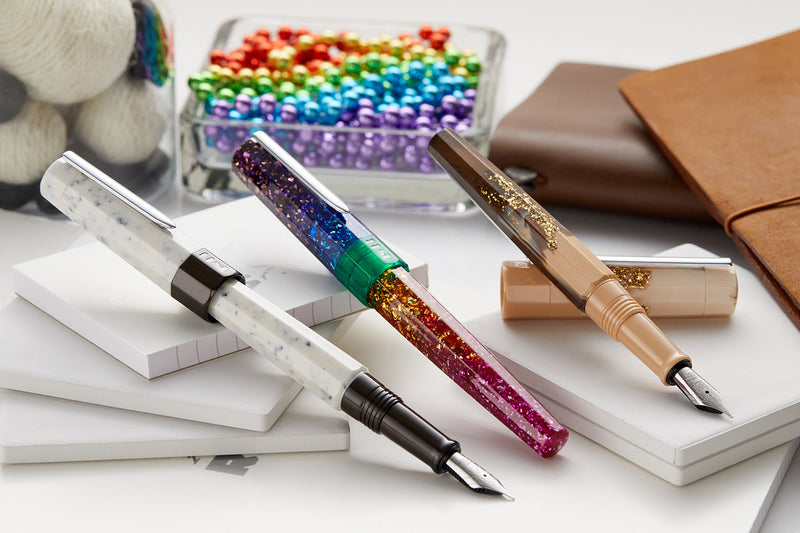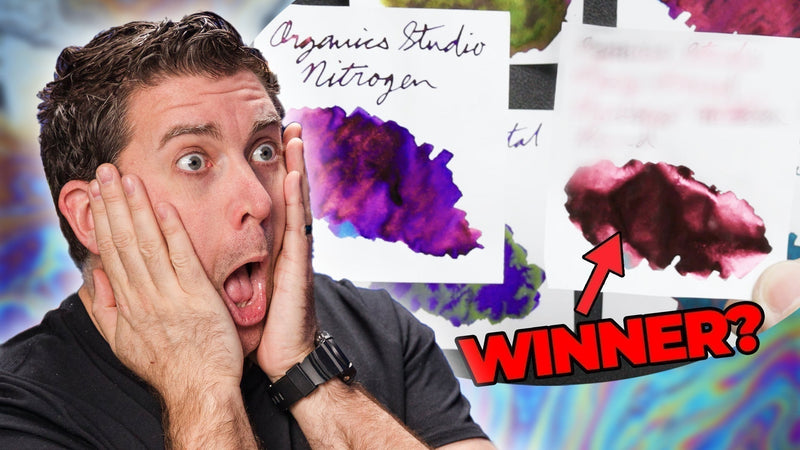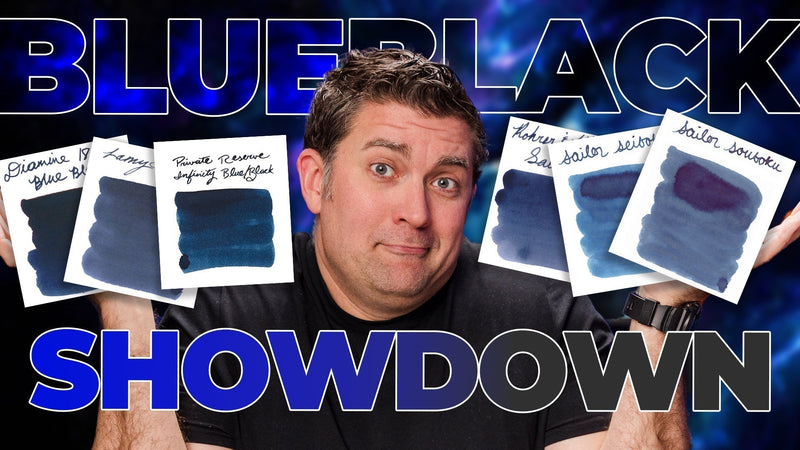Pilot Parallel Fountain Pen - Blue, 6.0mm
The Pilot Parallel fountain pen is a major breakthrough in calligraphy pen design. The unique parallel plate structure achieves a more beautiful and sharper handwriting than existing calligraphy pens. This product comes with a Parallel pen with a huge 6.0mm stub italic nib, one black and one red ink cartridge, a converter to flush the pen, and a nib cleaner.
Using two Pilot Parallel Pens, each with different Pilot Parallel Mixable color cartridges, you produce beautifully gradated lettering by touching the nibs together before writing. To use with bottled fountain pen ink, the Pilot Con-40 converter works best (sold separately).
Click here to shop all compatible Pilot ink cartridges.
- Condition
- New
- Brand
- Pilot
- Type
- Fountain Pens
- Color
- Blue, White
- Demonstrator
Whether or not the barrel of the pen is translucent, allowing you to see the ink and filling mechanism inside.
- No
- Body Material
- Resin
- Cap Rotations
For pens with a screw-cap closure, how many rotations it takes to uncap/recap the pen.
- 2.5
- Cap Type
How the cap is opened/closed from the barrel of the pen. Some common options include Snap-Cap, Screw-Cap, Magnetic Cap, or Capless (no cap).
- Screw-cap
- Compatible inks & refills
Which ink this pen will accept. Choices include bottled ink and various styles of pre-filled ink cartridges.
- Bottled ink, Proprietary Pilot ink cartridges
- Filling Mechanism
How the pen fills with ink. Click here to watch our video tutorial on common filling mechanisms.
- Cartridge, Converter
- Grip Material
- Resin
- Nib Size
- 6.0mm Italic
- Nib Color
- Silver
- Nib Material
- Steel
- Postable
Whether or not the cap fits securely onto the back of the barrel when open.
- No
- Retractable
Whether or not the nib/tip can retract into the body of the pen (usually for click or twist-open style pens).
- No
- Trim
- Blue
- Diameter - Body
- 11.3mm (0.4in)
- Diameter - Cap (without clip)
- 13mm (0.5in)
- Diameter - Cap (with clip)
- 19.4mm (0.8in)
- Diameter - Grip (mm)
Measured from the place most people choose to rest their fingers, which varies with each pen.
- 9.8mm
- Length - Body
The measurement from the back end of the barrel to the tip of the nib.
- 159mm (6.3in)
- Length - Cap
- 60mm (2.4in)
- Length - Nib
The measured length of the visible portion of the nib when it is installed in the pen, from grip to tip.
- 7.5mm (0.3in)
- Length - Overall (Closed)
- 168mm (6.6in)
- Weight - Body
If a converter is included with the pen, this weight is reflected in the total.
- 6g (0.2oz)
- Weight - Cap
- 4g (0.1oz)
- Weight - Overall (g)
- 10.0g
- Max Ink Capacity - Cartridge
The maximum volume of ink that can fit in the pen when using a cartridge.
- 1.17ml
- Max Ink Capacity - Converter
The maximum volume of ink that can fit in the pen when using a converter.
- 1.37ml
- Max Ink Capacity - Eyedropper
The maximum volume of ink that can fit in the pen when filling the entire barrel of the pen via eyedropper.
- 4.03ml
